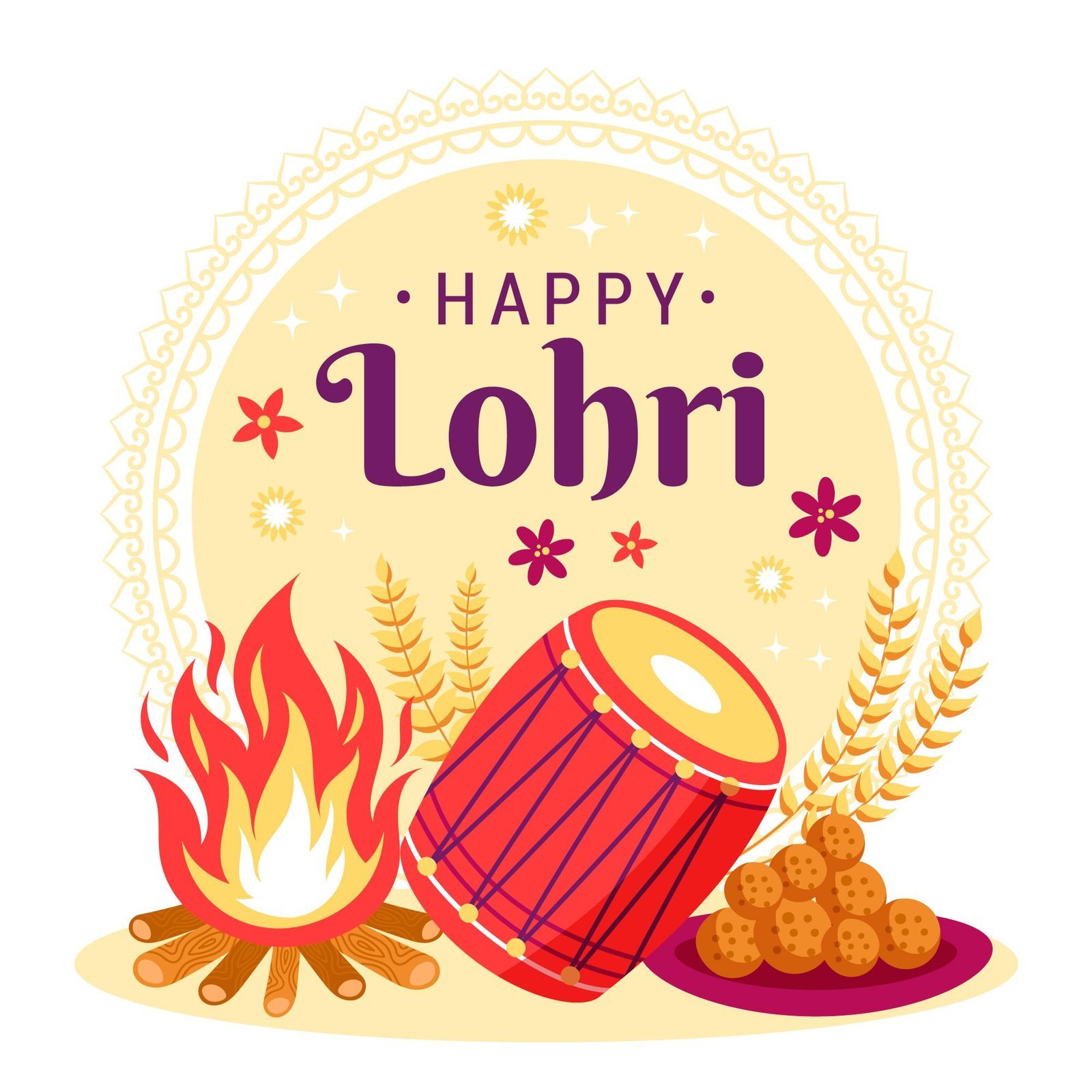
Introduction :
Lohri, a pleasant winter festival, is celebrated on January 14th every year in northern India. Initially a celebration through Punjabi people in Punjab, it has now become a international festivity, mainly in northern regions, embraced by means of both Punjabi and Hindu groups. Rooted within the harvest of rabi plants, Lohri is a time for people to come together, offer prayers for agricultural prosperity, and mark the transition to a brand new financial year for Punjabi farmers. In this exploration, we’re going to uncover the layers of Lohri Festival 2024 – its history, cultural significance, and the pleasure it brings communities.
Historical Roots and Harvest Celebrations :
Lohri Festival 2024 is all about celebrating the harvest, specially of sugarcane plants. For Punjabi farmers, it indicates the give up of the harvest season and a fresh financial start known as Maghi. Lighting a bonfire, called Agni Dev, is an important part of Lohri. People gather round the fireplace, imparting prayers to Agni Dev and seeking benefits for a rich agricultural year. The festival embodies hope and renewal, especially for farmers who view it as a time of new beginnings.
Interfaith Celebration :
What makes Lohri special is its inclusive nature. Initially a celebration through Punjabi groups, it has ended up a shared pleasure for Hindus as well. Both communities are a part of prayer, expressing gratitude to the Sun God (Surya Devta) and Agni Dev for maintaining agriculture.Lohri goes beyond religious boundaries, becoming a shared emotion and celebration of hope for a better future.
Unity in Diversity – Different Names, Same Spirit :
While Lohri has its roots in Punjab, its spirit echoes across India under different names. In the North, it is Lohri; in the South, it transforms into Pongal; in the West, it is celebrated as Makar Sankranti, while Gujarat refers to it as Uttarayan. Despite diverse names, the festival remains a harmonious celebration of harvest and prosperity, showcasing the unity in India’s cultural diversity.
Traditional Foods and Culinary Delights :
Festivals and food go hand in hand, and Lohri is no exception. The festival features a delicious spread, including sarson ka saag, makki ki roti, gajak, til-gur laddoos, gajrela, popcorns, peanuts, rewri, and gur. These mouthwatering treats not only please the taste buds but also symbolize the abundance and richness associated with the harvest season.
Cultural Expressions – Dance, Music, and Attire :
Lohri celebrations are vibrant and lively, filled with joyous expressions. People come together to dance to traditional folk music, accompanied by the beat of dhol and other instruments. Authentic Punjabi attire adds a colorful touch to the festivities, with vibrant turbans, phulkari-embroidered clothing, and an atmosphere of joyous revelry. Communities unite to share the joy of the harvest season.
Importance of Lohri for Farmers :
Lohri is more than just a festival; it’s a deeply emotional time for farmers. Beyond the bonfires and celebrations, it marks a moment of reflection on their hard work and a hope for a prosperous agricultural year ahead. The festival serves as a reminder of the symbiotic relationship between farmers and nature, emphasizing the importance of the harvest season.
Educational Aspect :
Lohri serves as an educational opportunity, especially for younger generations. Schools and institutions use the festival to teach children about the significance of agriculture, the changing seasons, and the cultural heritage associated with Lohri. It fosters a sense of appreciation for traditional practices and the importance of sustainable living.
Community Togetherness:
Lohri is a time when communities come together, breaking religious and cultural barriers. Regardless of background, everyone is welcome to join in the celebrations. It motivates the spirit of unity and togetherness, emphasizing that joy knows no boundaries.
Conclusion :
In conclusion, Lohri stands as a joyful celebration of harvest, unity, and cultural diversity. From its humble beginnings in Punjab, it has transformed into a global festival, uniting communities across regions and backgrounds. As the bonfires blaze and prayers are offered for prosperity, Lohri becomes more than just a festival; it becomes a shared experience, a celebration of gratitude, and a reaffirmation of the cultural richness that defines India. So, let’s join Lohri Festival 2024, dance around the fire, savor the delectable treats, and celebrate the spirit of Lohri – a festival that transcends boundaries and embodies the essence of togetherness. Happy Lohri!










